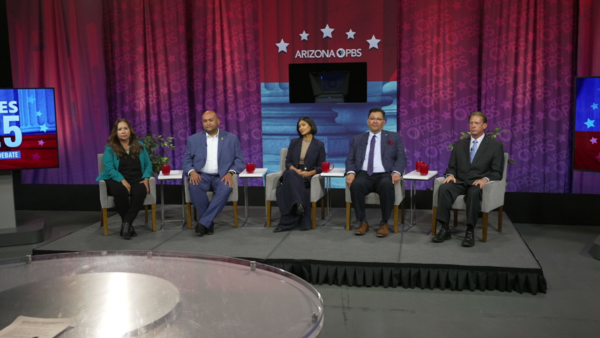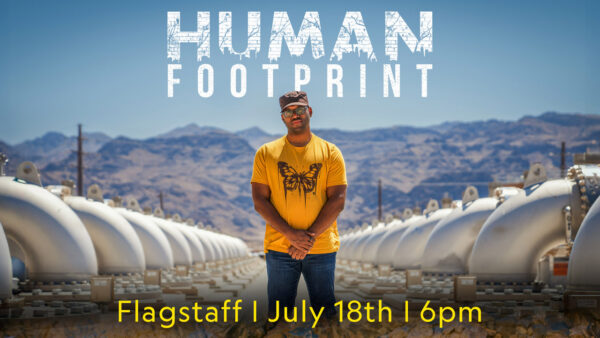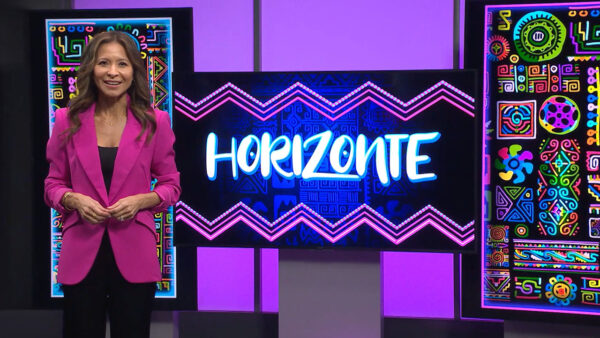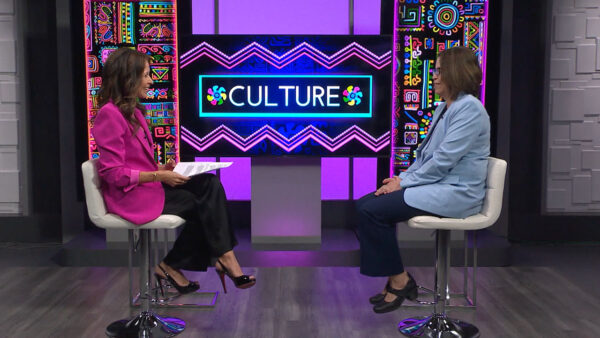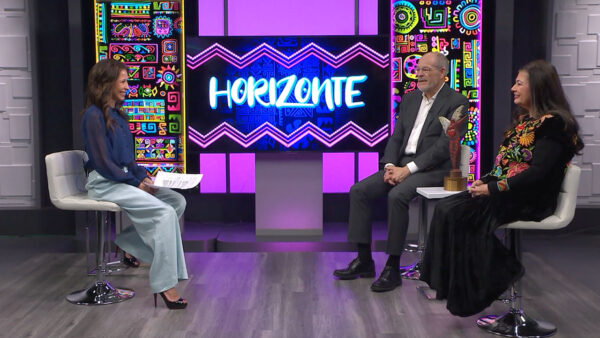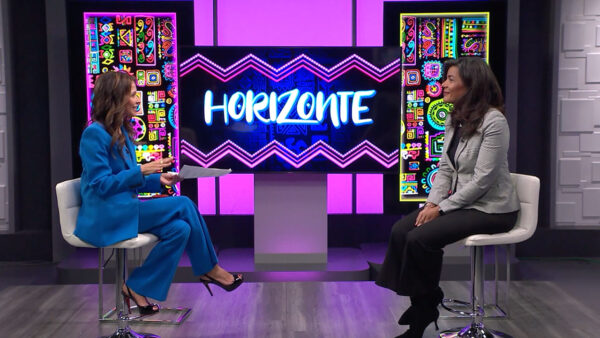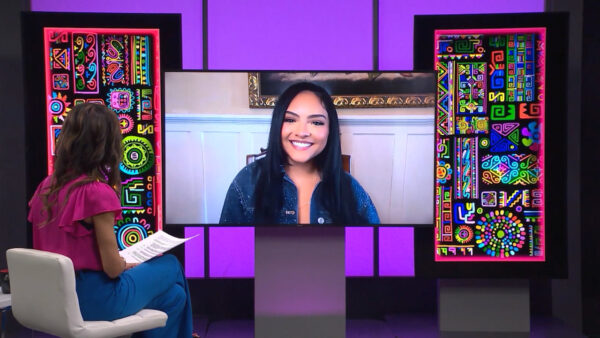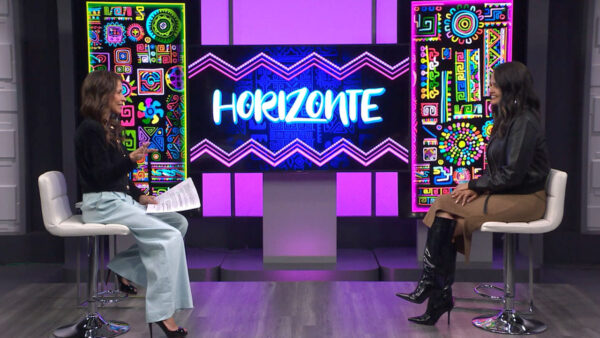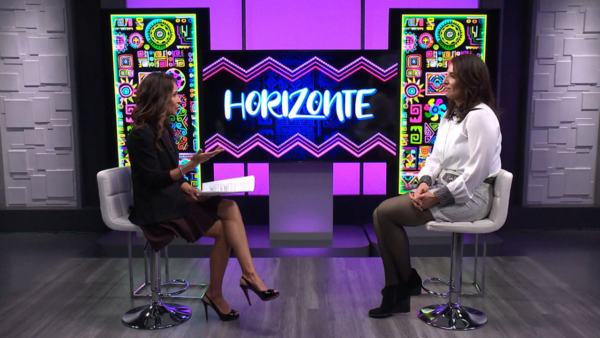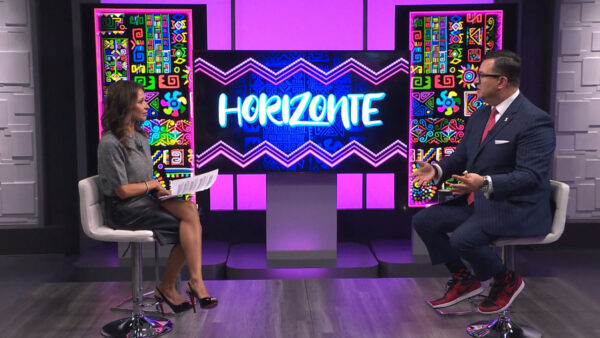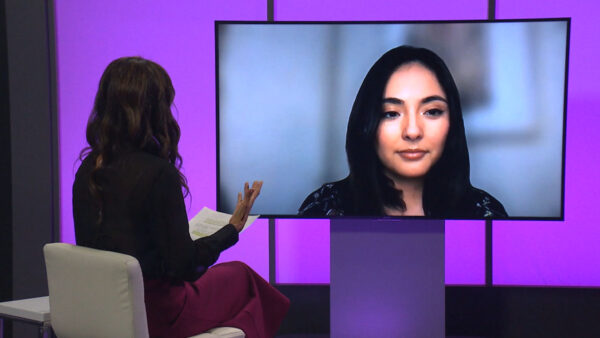Running now until June 30, the Saber Acomodar exhibit at the Arizona State University Art Museum recognizes Guadalajaran artists and shares the story of Jalisco, a state in Mexico.
The exhibit is split into three parts. The first layer is filled with historical artisan and folk art from the last hundred years. The second layer is made up of international artists collaborating with folk artists. The final layer celebrates contemporary artists. Curator at the ASU Art Museum Julio Morales goes over some of the pieces of art individually on “Arizona Horizon.”
Twenty five artists, most of whom are from Guadalajara, will be featured in the exhibit.
Saber Acomodar is a free exhibit located on ASU’s Tempe campus. The art will be displayed until June 30. For more information on the exhibit, go here.
Jose: In Sounds of Cultura, Saber Acomodar is a land mark exhibition that for the first time tells the story of art in the state of Jalisco, Mexico focusing on the last 100 years. Joining me to talk about this exhibition Julio Morales, curator for the ASU art museum. Julio welcome back to Horizonte first give us a translation for the title of the exhibition.
Julio Morales: It’s a little tricky I think the best translation is learning how to accommodate and at the same time to me it is also about having and doing something with what you have.
Jose: Give us an overview of the exhibition. As I understand it is three different phases of arts from Jalisco.
Julio Morales: Right so basically there is three layers with the exhibition. It’s a historical work of artisanal folk artists that have been going on in the region for the last 300 years but we are focusing on the last year. The second is the international artists collaborating with the folk artists from the region of Jalisco specifically Guadalajara.
Jose: Artists from outside of Mexico?
Julio Morales: From all over the world that are working with different talleres workshops. And the third layer is the contemporary artists that are there right now.
Jose: We want to go through the pictures that are in the exhibition we’re actually going to start with one that is not in the exhibition but a source and inspiration something you want to talk about. It is a very famous piece by Velazquez. We will put it up on the screen. Have an explanation as to what it represents.
Julio Morales: So this painting by Velazquez is one of the most famous paintings in the world. If you study art history -- if you focus on the painting, the little vessel the little teacup is actually from Guadalajara from Jalisco. When I started to work on this project with our guest curator who is now the director of the mussel Del Barrio in New York. We talked about this painting and we talked about the history and the importance of artisanal folk artist coming from that region of Mexico.
Jose: And remind me when Velasquez painted this piece
Julio Morales: I can’t remember the exact date but basically it’s a Pre-Columbian tradition.
Jose: It would of represented indigenous artwork that has been moved to the old world?
Julio Morales: Exactly.
Jose: We’re going to start going through just piece by piece now and discuss some of those connections as well as some new stuff. So this piece here tablas.
Julio Morales: This is one of the most important pieces. Eduardo Terrazas is a really amazing artist he is also an architect and a designer and he actually designed the 1968 Olympics. That very famous logo and everything else that was associated. He ended up collaborating with the native people in Mexico and their tradition that is even older than the United States. So this work is actually not a painting. It looks like a painting but it is actually woven thread with beeswax. What he did in 1968 is incorporated this tradition with more of a modernist ascetics. The whole aesthetics of the Olympics was based on some of this work.
Jose: The next piece we want to show has somewhat simper at least geometric aspects to it. That we will put up. How would you describe this? This is homage to the square?
Julio Morales: Right. Which is Jose Davila a contemporary Guadalajara artist. This is an homage to the square of a very famous ball house that was a very influential in a lot of work in Latin America. He actually began as an artist in Latin America even though he is from Germany. There is a big exhibition in New York that is dedicated to his time in Mexico. He is very influential in the field design and art and also because the majority of artists in Guadalajara are trained by architects over they’re really influenced by his work.
Jose: This next piece looks like a series of lamps almost.
Julio Morales: Right, That is the beautiful work of Jorge Pardo who is a Cuban-born artist. He was one of the first artist 30 years ago to start working in with artisanal artist in a ceramic factory called Suro. At Suro they work with international artists that come and they have different designs. And really it’s a very unique place where you can get this amazing work as a collaboration between the artist and the folk artists that are working there.
Jose: He represents that aspect of international artist working with local artists. We will put up the next piece on the screen. It is a very interesting piece. A spider and a runner.
Julio Morales: Right. That is Jorge Mendez. These are very small images. A little surreal. Some of the work when we designed the exhibition it is not an exhibition where you go through the historical, international and contemporary. We mix everything together so you can see the bridges between the different eras of work.
Jose: Another what looks to me kind of geometric design coming up that we’re going to put up on the screen now. How would you describe this?
Julio Morales: This is part of the same. It’s another Davila. You know, Joseph is very famous in regards he would to paintings and works on paper, but what makes this really special is that those squares are made from ceramics. So one of the things that Guadalajara, Jalisco are known for is ceramics, textiles, fiber work, metal work, and a couple other once as well such as bookmaking. These are constantly highlighted within the exhibition but ceramic probably being the most known for.
Jose: And the last image we want to put on the screen, though there are a lot more to see, is also pretty fascinating.
Julio Morales: Right. This is one of in a series of images by Daniel Guzman is an artist that was originally from Mexico City and what is happening and why we had so much of an interest in Guadalajara are artists now from Mexico City are moving to Guadalajara sort of now the center is being replaced by off center which is Guadalajara. I think this is one of a couple artists that are now gravitating toward the cultural production that is happening in Guadalajara.
Jose: And speaking of that culture tradition in Guadalajara, In Phoenix there is a lot going on between the two cities.
Julio Morales: Exactly this is part of our collaboration and our co-presenter CALA Alliance. The exhibition is co presented by CALA Alliance here in Phoenix and also in collaboration in MCA in Denver and essentially we started about a year ago an exchange program between artists from Guadalajara and artists from Phoenix with CALA Alliance we actually have our second set of artists right now that just arrived in Phoenix.
Jose: And Julio we’re almost out of time. There’s some from lectures coming up?
Julio Morales: A couple programs in combination with the exhibition. One is a very young emerging amazing curator from Guadalajara that is going to give a lecture at the museum on April 19th at 6:00 p.m. And interspecific which is the new residents from Guadalajara are here to do a musical performance on May 3rd.
Jose: Sounds fascinating, I wish we had more time to talk. Thank you for joining us on "Horizonte." And thank you for joining us. For Horizonte and AZ PBD I am JOSÉ CÁRDENAS. Have a good evening.
"Horizonte" is made possible by contributions from the friends of Arizona PBS, members of your PBS station. Thank you.
Julio Morales: Curator, ASU Art Museum


